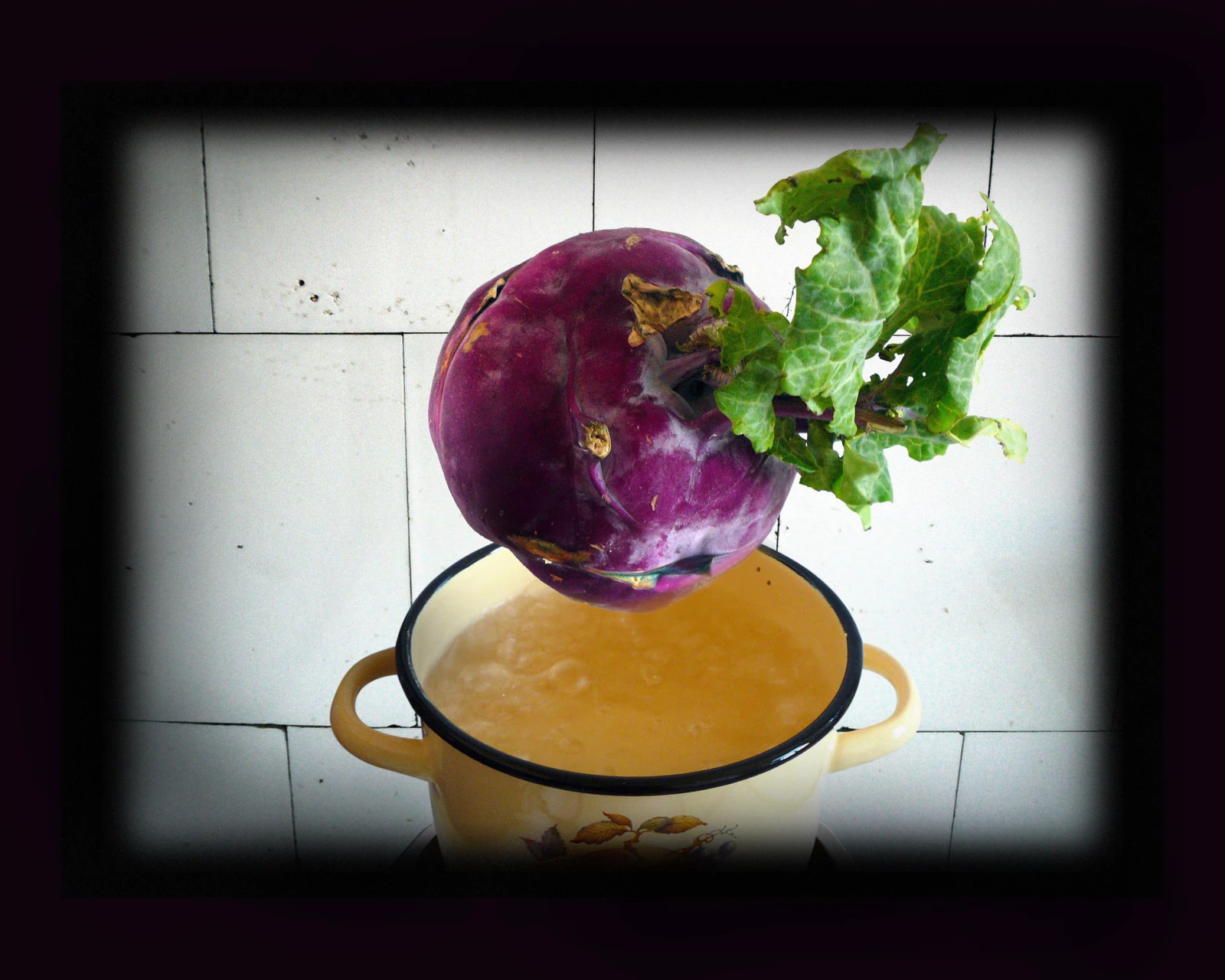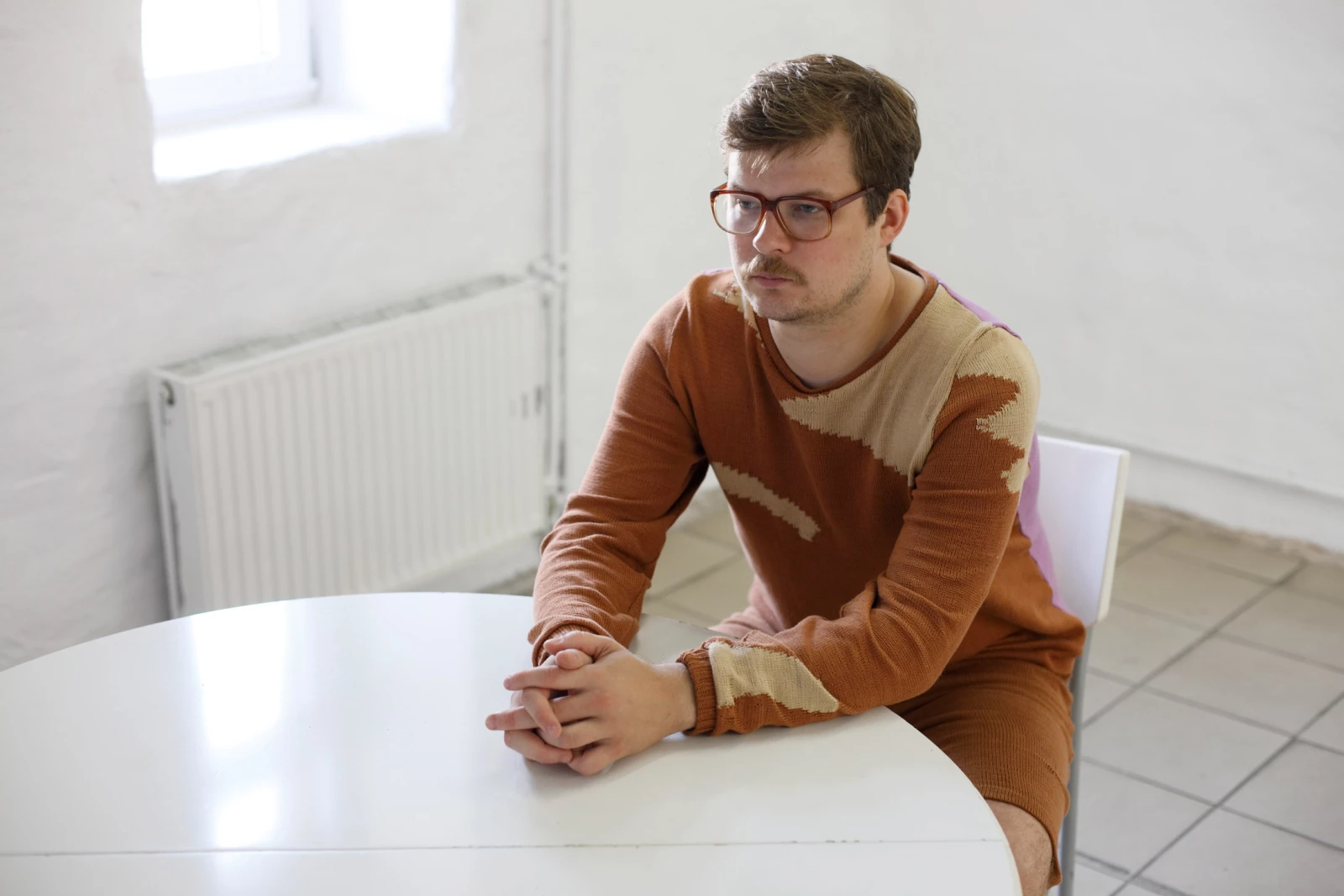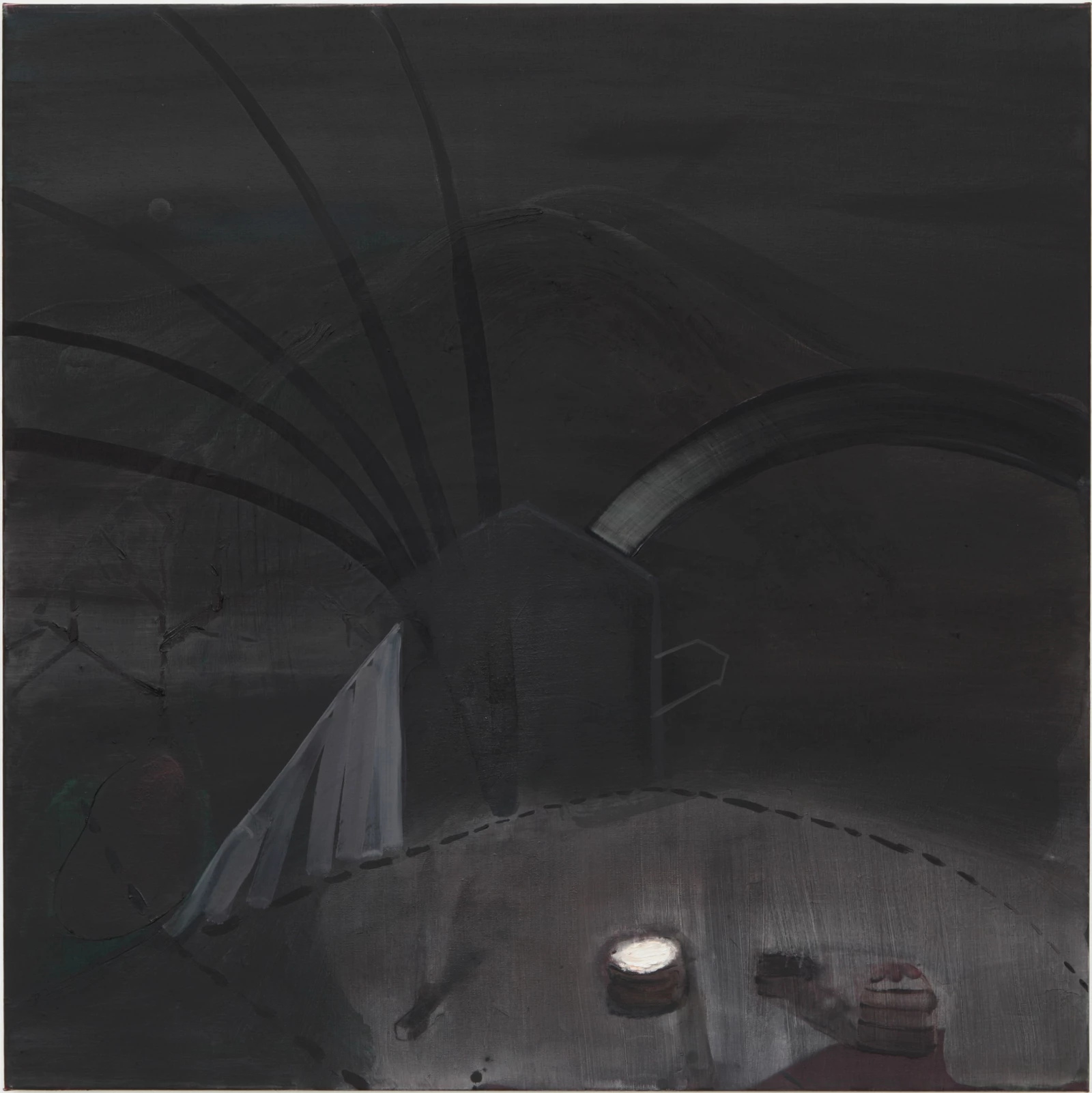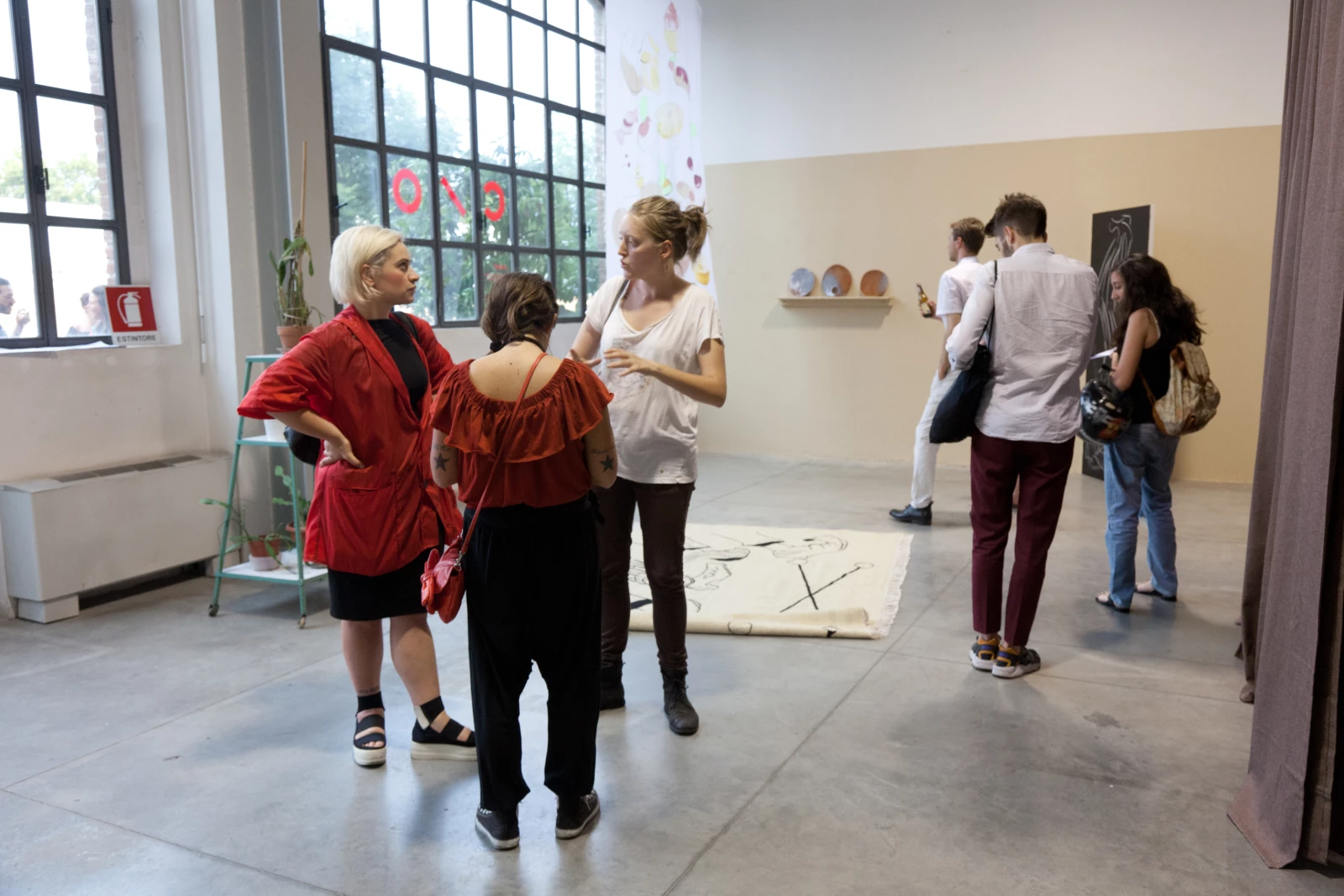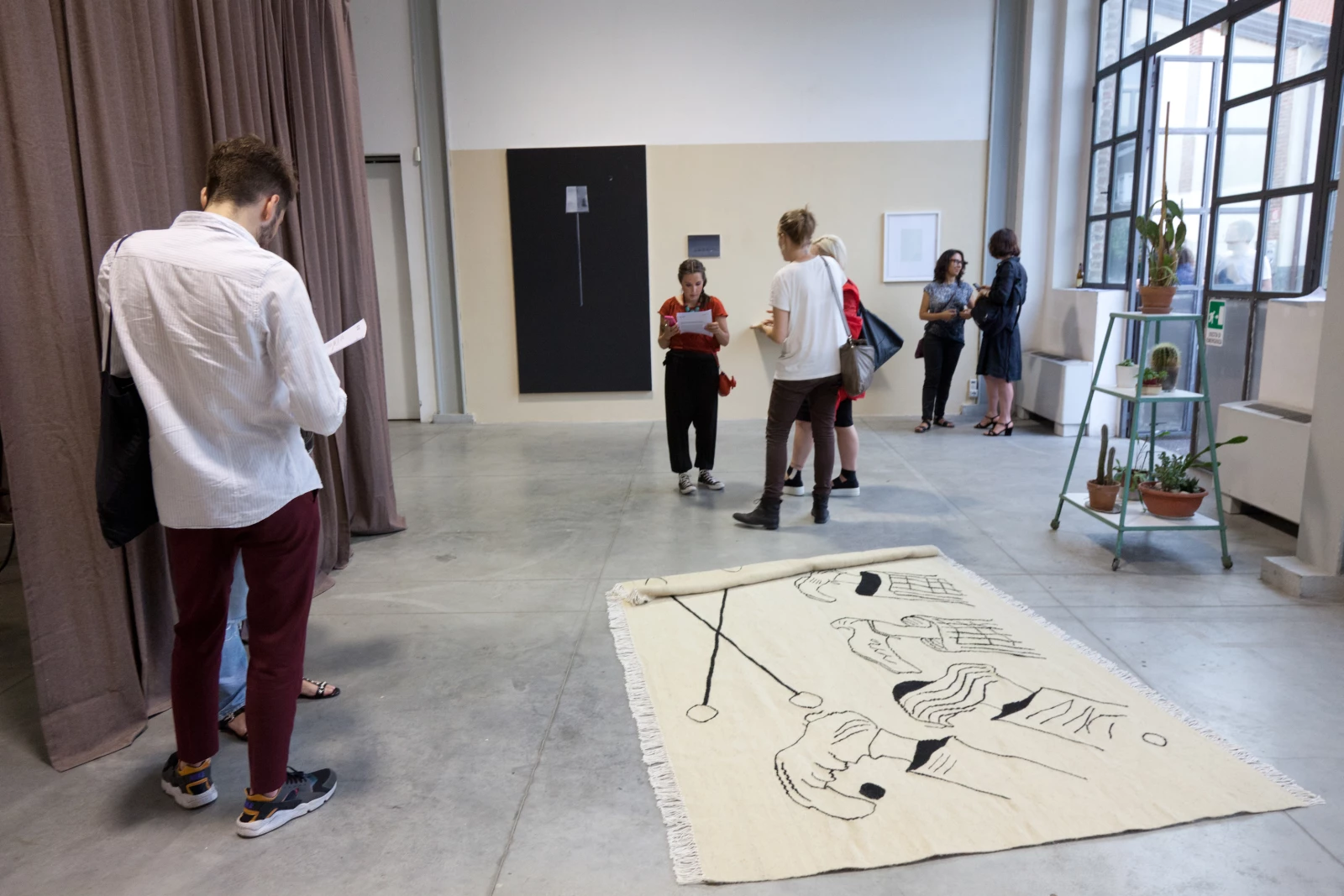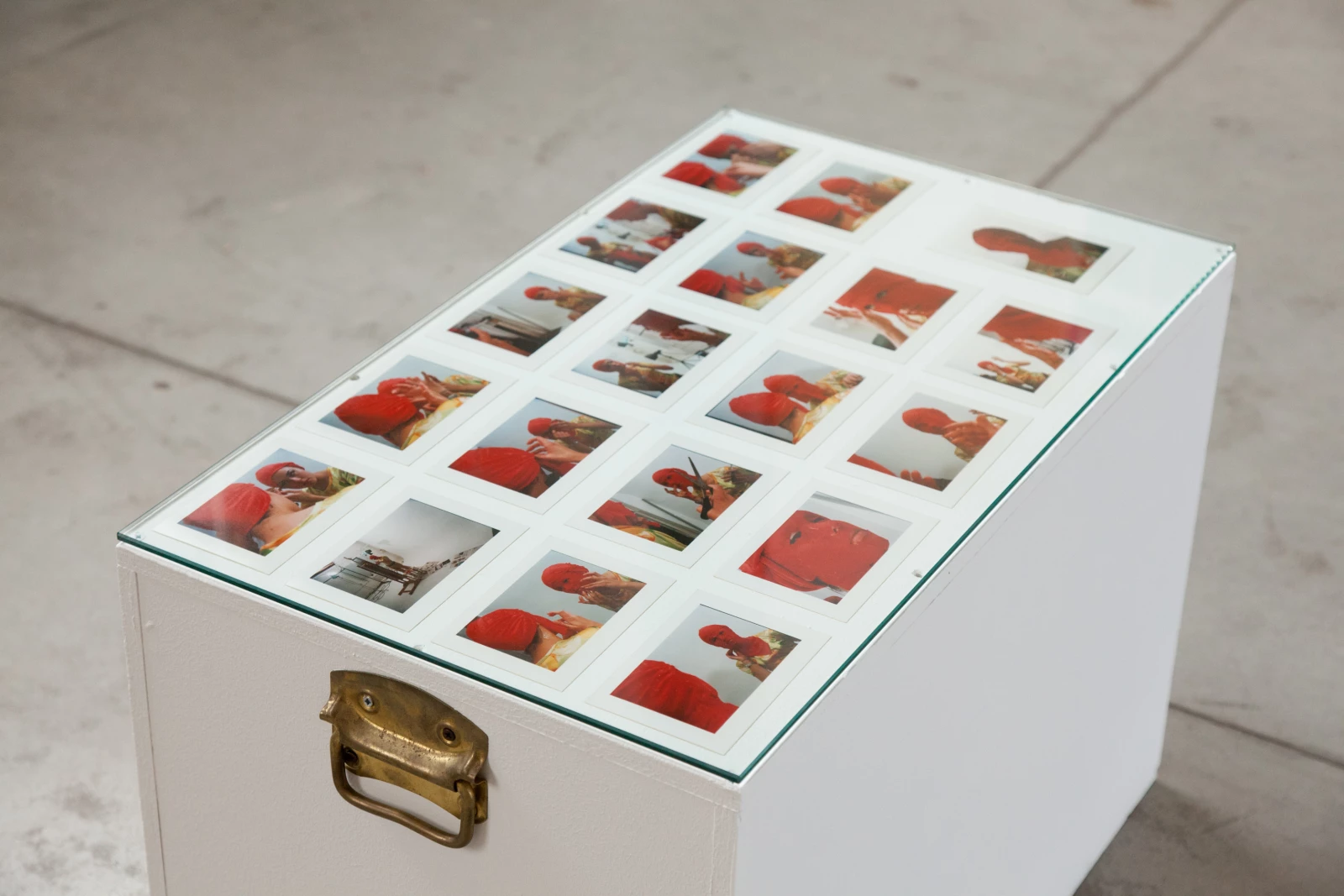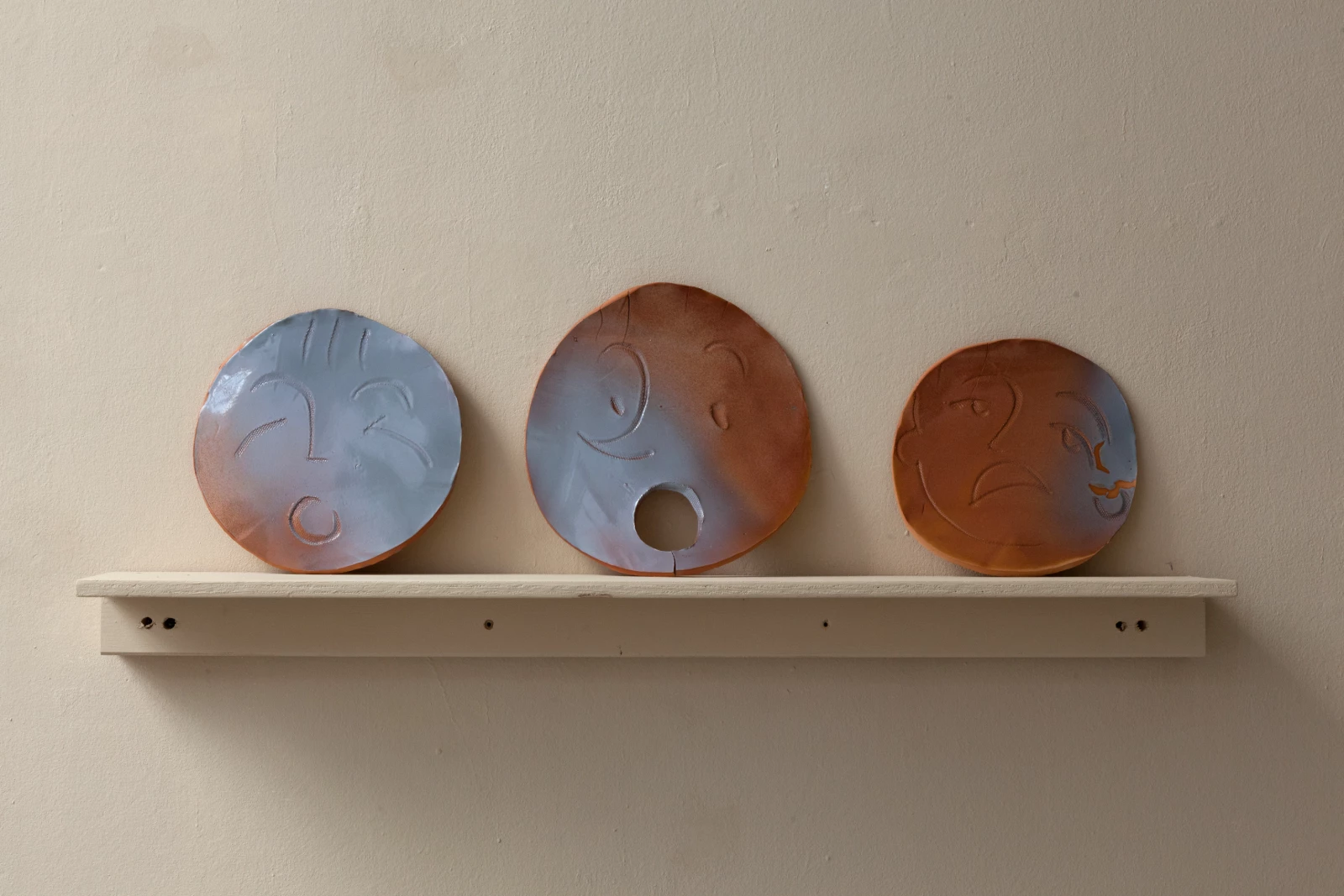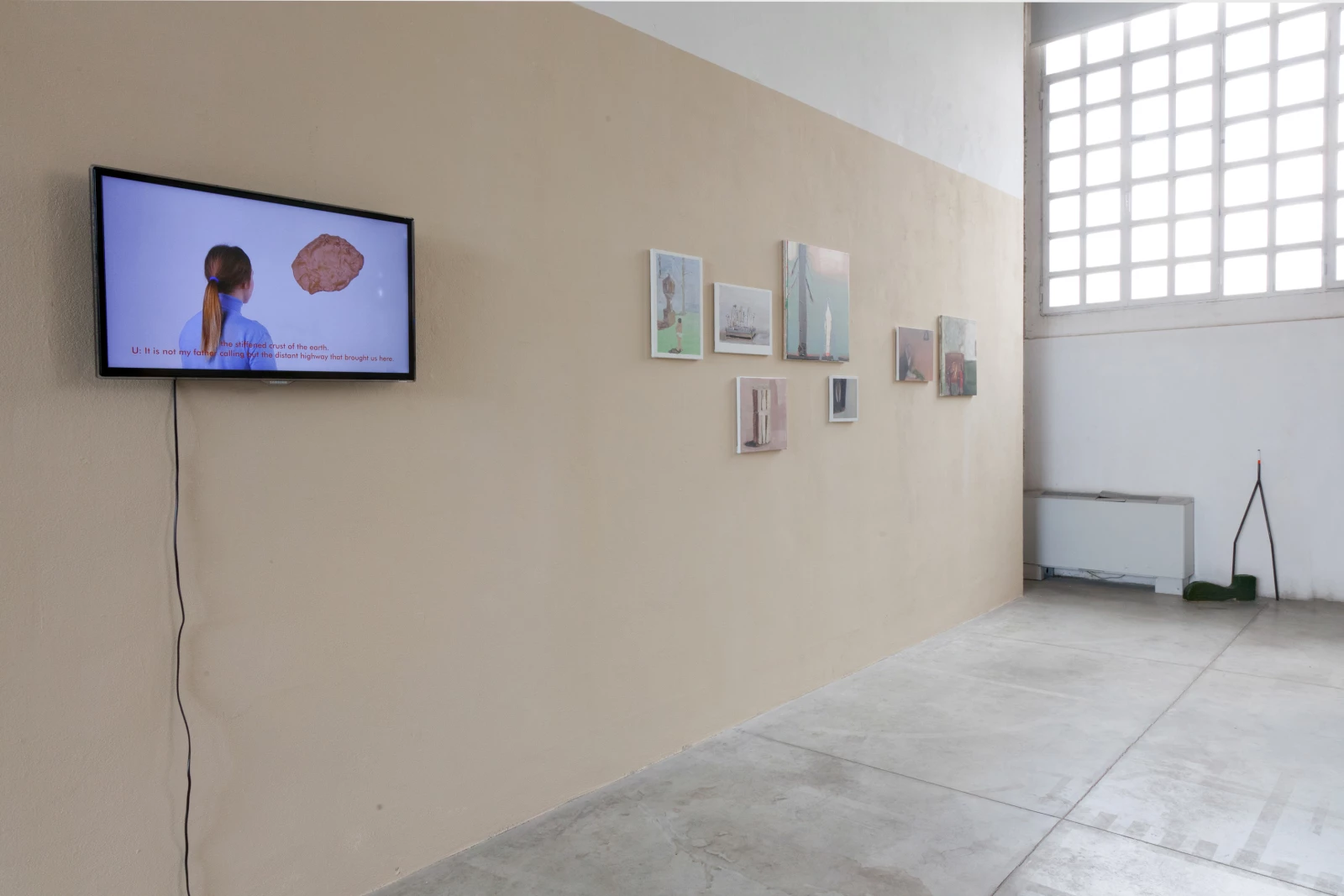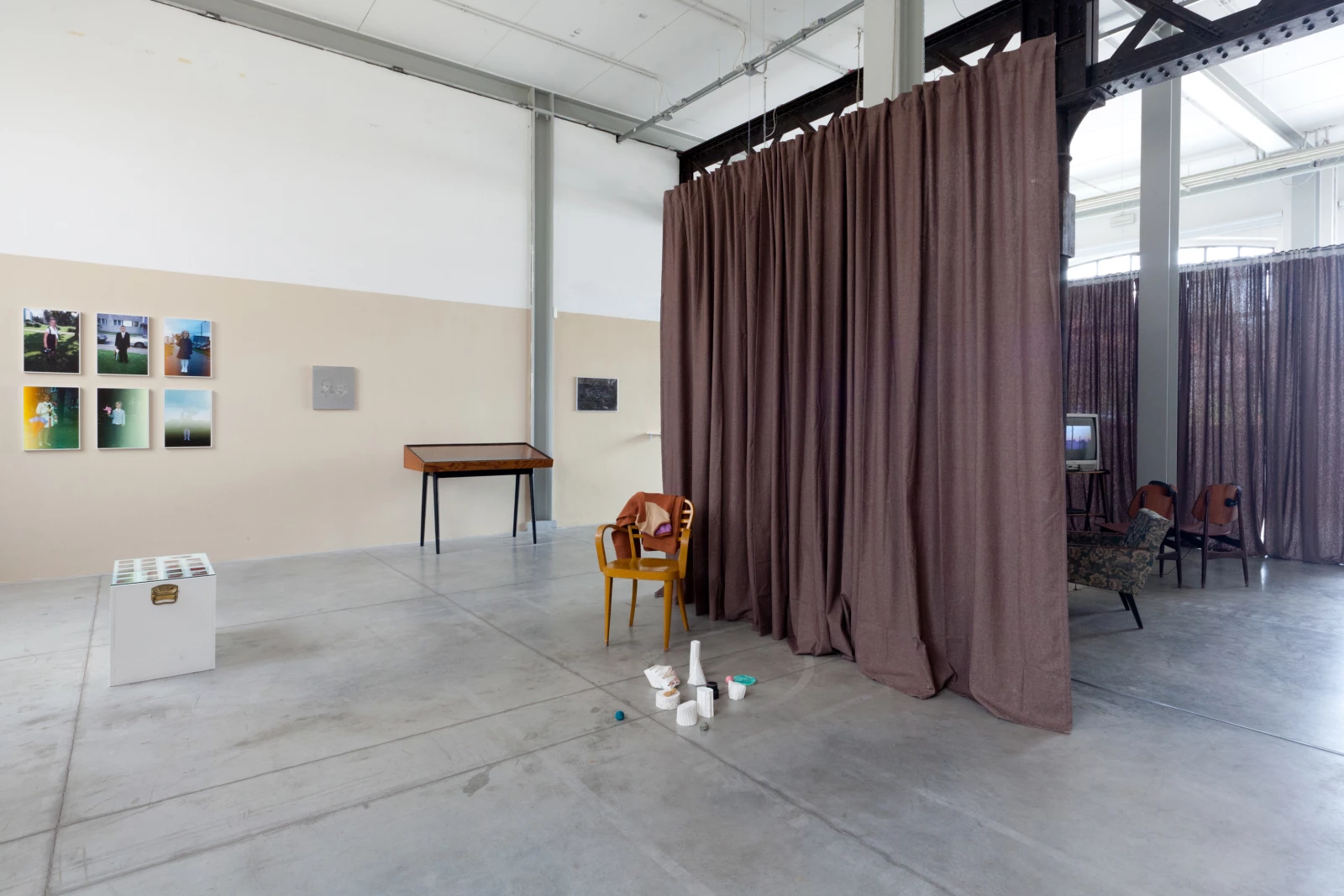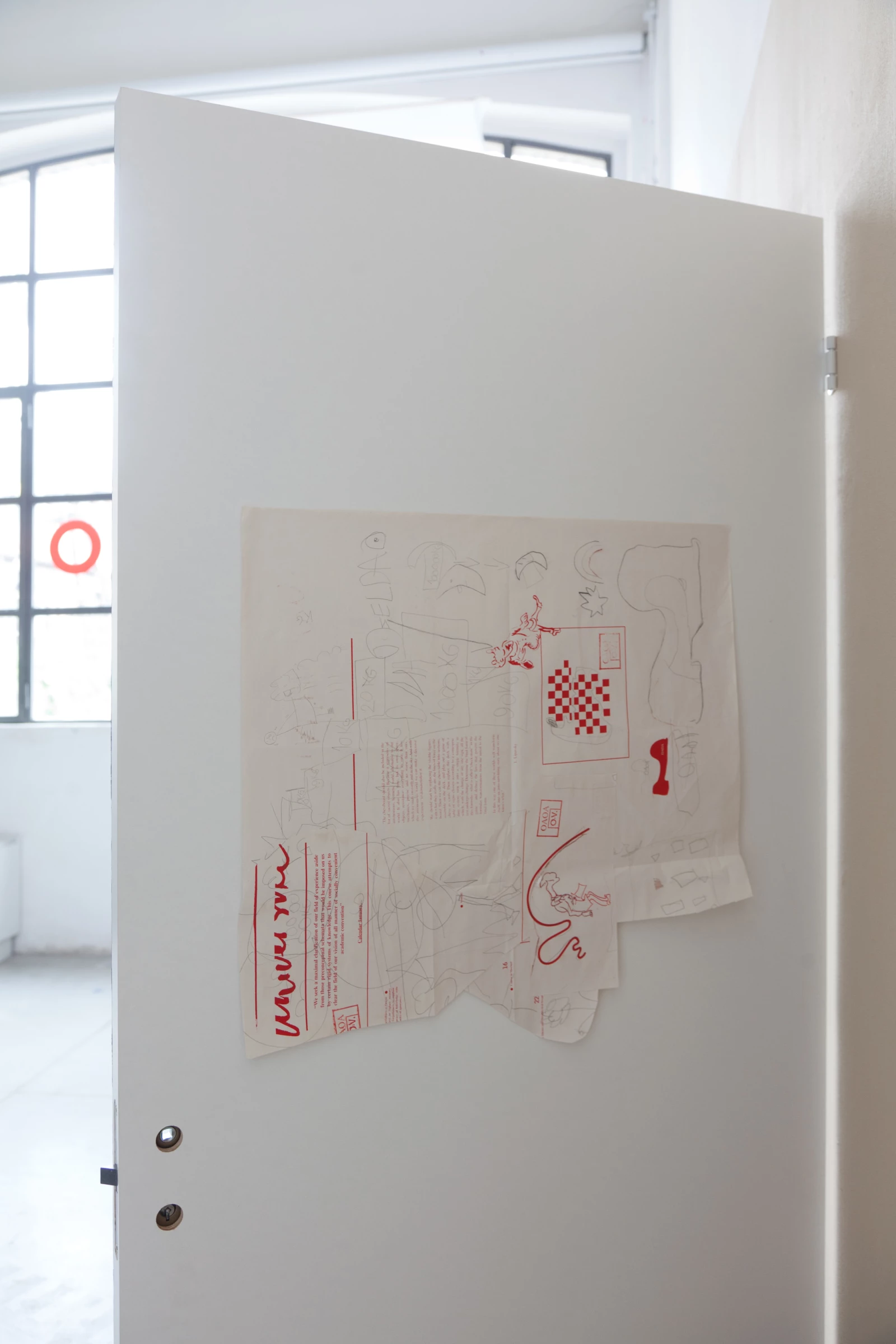Le fragole del Baltico
CURATED BY
Simone Menegoi e Zane Onckule
IN COLLABORATION WITH
kim? Contemporary Art Centre, Riga
ARTISTS
Ēriks Apaļais, Jānis Avotiņš, Ieva Epnere, Kaspars Groševs, Ieva Kraule, Inga Meldere, Daria Melnikova, Ieva Rubeze, Krišs Salmanis, Ola Vasiljeva
From 9.06.2015 to 19.07.2015
Special thanks to Temnikova & Kasela Gallery, Antoine Levi Gallery
Project supported by Ministero della Cultura della Repubblica di Lettonia, State Culture Capital Foundation, VKN
Le fragole del Baltico is a Latvian contemporary art exhibition. Initially conceived as a complement to Latvia’s pavilion at the Milan Expo, it survived the unfortunate last-minute cancellation of the pavilion. Le fragole del Baltico presents a selection of ten artists, mostly born around 1980, almost all making their debut in Italy: Ēriks Apaļais, Jānis Avotiņš, Ieva Epnere, Kaspars Groševs, Ieva Kraule, Inga Meldere, Daria Melnikova, Ieva Rubeze, Krišs Salmanis, and Ola Vasiljeva.
The exhibition does not seek unity through a single medium or thesis; it was formed based on the artists’ works. Its overall framework is simply that of a presentation of recent works, either pre-existing or created specifically for the show, seamlessly embracing distinct artistic personalities and diverse media: painting and sculpture, video and applied art, photography and sound.
The title, whose ambition is to be both poetic and ironic, was suggested by the vague (and vaguely exotic) perception of the Baltic countries in Southern Europe as cold lands, under gray skies where a fruit like the strawberry could never ripen. In fact, strawberries and other berries regularly brighten Latvian tables from early summer through the rich autumn season; and contemporary art, which—apart from one or two names, often not even connected to their country of origin—is little known in Italy, is equally vital and present.
Although the exhibition does not have a thesis or a medium to frame it, it is nonetheless quite cohesive, and not only in terms of age. It reflects a taste; the curators’ taste, naturally, but also a more elusive and difficult-to-define taste shared by the latest generations of Latvian artists. Some elements tend to recur, though in very different forms.
For example, there is a tendency to revisit the past, whether personal and familial or historical, as seen in the paintings and small plaster sculptures by Inga Meldere, which evoke vivid short stories, or in Ieva Epnere’s series of photographs depicting students bringing flowers to their teachers on the first of September, following a custom that originated during the Soviet era.
There is a strong sense of landscape, weather, and the changing seasons, found in some of the witty, ingenious videos by Krišs Salmanis. A pervasive melancholy hovers over the sparse and meditative paintings of Ēriks Apaļais and the drawings of Jānis Avotiņš, anonymous postcards from mysterious places, accompanied by the painting of a ghostly couple.
A particular type of humor, impassive and slightly absurd, an example of which is Ieva Rubeze’s video anthology of Latvian “TV healers” from the ’90s, set to a soundtrack of white noise.
There is a taste for decoration, applied arts, and all things handmade, which unites Kaspars Groševs’ knitted tracksuit, conceived as an opening outfit; Ieva Kraule’s installation for a fairy-tale banquet, with ceramic plates depicting cartoonish faces of diners and fabrics painted with candy motifs; Daria Melnikova’s literal interpretation of measure and (de)composition with burned yet intact images, a ceramic bowl broken from the start, or a sheet of graph paper hand-drawn.
And finally, an elusive idea of domesticity, as drawn by the constellations of objects by Ola Vasiljeva, dotted with funny gags: a door that becomes a blackboard on one side and a bulletin board on the other, two Dada-inspired assemblages including glass shoes, a white rug on which it is preferable not to walk, but which is painted with shoe patterns.
To amplify this sense of domesticity and to give the exhibition the feel of an interior space, the curators chose a setup whose aesthetic is less aligned with the Anglo-Saxon 20th-century white cube and more reminiscent of the 19th-century salon or artists’ home-studios later converted into museums—such as that of the modernist couple Romans Suta and Alexandra Beļcova in Riga.
The installation includes colored walls and curtains, a sofa and an armchair, potted plants—a quintessential feature of Latvian homes, studios, and even exhibition spaces—and invites viewers to read the artworks (the “strawberries” in this “basket”) as evocative stand-ins for furniture and other everyday life objects.
ARTISTS BIO
Ēriks Apaļais (1981)
lives and works in Riga. He mainly works in painting, depicting objects, symbols and cultural signs that anchor both in his private as well as collective memory. Recent solo shows include : Twigs (2014), The Arsenāls Exhibition Hall, LNMM, Riga; Inscribed Silhouettes (2014), Galerie Vera Munro, Amburgo; Words (2013), kim? Contemporary Art Centre, Riga; Art Cologne, New Positions (2012); Confessions (2011), Galerie Vera Munro, Amburgo. Mostre collettive selezionate: The Forgotten Pioneer Movement (2013), District Berlin, Berlino; Contexts of Painting, CAC, Vilnius. Apaļais The artist has been awarded the Karl H. Ditze for best diploma, the University of Fine Arts of Hamburg, Germany (2011) and DAAD (German Academic Exchange Service) award for excellence. In 2011 he was nominated for Ars Viva 11/12 prize. The artist is represented by Galerie Vera Munro.
Jānis Avotiņš (1981)
lives and works in Riga. His practice encompasses monochrome paintings, drawings and occasional objects. They deal with themes like loneliness and alienation, with ghostly faces and figures reminiscent of Soviet-era photography. Recent solo shows include: Jānis Avotiņš, Johnen Galerie, Berlino (2013), Galerie Rüdiger Schöttle, Monaco (2013), Ibid., Londra (2013), Galerie Vera Munro, Amburgo (2013), Ludwig Forum, Aachen (D), 2008. Mostre collettive selezionate: Fobofilia (2015), Fondazione Sandretto Re Rebaudengo, Torino; Ostwärts, Ludwig Forum, Aachen (2014/2015); Only here (2013), Collezione d’arte contemporanea della Repubblica federale tedesca, Bonn; Gaiety is the most outstanding feature of the Soviet Union (2012), Saatchi Gallery, London; Is It That He Does Not Seek The Truth, But Does Want To Influence? (2011), Riga Art Space, Riga, e 14a Triennale di pittura di Vilnius: False Recognition (2010), CAC, Vilnius. The artist is represented by Galerie Rüdiger Schöttle and Galerie Vera Munro.
Ieva Epnere (1977)
lives and works in Riga. Her body of work includes photography, video and film, where personal and private stories are the starting point for artistic reflections on identity, tradition and ritual. Recent solo shows include: Waiting Room (2015), Contretype, Bruxelles; Solo Show (2014), Galerie des Hospices, Canet-en-Roussillon (FR); Mindscapes (2013), kim? Contemporary Art Centre, Riga, Latvia; The Green Land (2010), kim?, Contemporary Art Centre, Riga, Latvia; Darbi (2009), Kulturforum Alte Post, Neuss (D); Mikrorajons (2007), The exhibition hall Arsenals, Riga, Latvia; Encounters (2006), Atelier Hoeherweg, Düsseldorf. Group exhibitions: Ornamentalism. The Purvītis Prize (2015), Arsenale, Venezia: 61.o International Short Film Festival Oberhausen, international competition (2015); Bad Feminism, RPL Film Theatre, Regina, Canada (2015); 60.o International Short Film Festival Oberhausen,international competition (2014).
Kaspars Groševs (1983)
lives and works in Riga. The artist uses a variety of media and materials, such as – drawing, text, textile, sound, objects and installations in a constant search for formal solutions, aimed at shaping a coherent and intriguing message. Recent solo/two person exhibitions include : Qu'est-ce que ça peut faire tout ça (in collaboration with Ieva Kraule, 2015), Shanaynay, Parigi; OAOA (Jūras griesti) (in collaboration with Ola Vasiljeva, 2014), Jūras Vārti, Ventspils; 00:10:00:00 (2013), kim? Contemporary Art Centre, Riga; I/O. Without Enemies (2011), kim? Contemporary Art Centre, Riga e H (2012), Kanepes Culture Centre, Riga. Group shows: Lily's Pool (2015), Art In General, New York; Vortex (2014), Project Space Garage, Mosca e Aspen-Kemmern (2014), kim? Contemporary Art Centre, Riga. He infrequently performs with his music and contributes texts to the Latvian cultural press and exhibition catalogs. Groševs is a co-founder and curator of gallery Four To Seven (427) in Riga.
Ieva Kraule (1987)
lives and works in Riga. By using different media including photography, video, ceramics and painting she references applied arts and architecture of the Soviet era while tracing out the origins of both personal and collective aesthetic codes. Recent solo exhibitions include : Nobody dances like that anymore (2014), galleria 427, Riga; …if all you told was turned to gold (2014), Vita Kuben, Umeå; Loneliness will be my greatest treasure (2014), Kalnciema kvartāls gallery, Riga; 11 out of 10 (2013), kim? Contemporary Art Centre, Riga, e Long Awaited Holidays by the Abyss of Fictitious Memories (2012), galleria Bastejs, Riga. Group exhibitioons: Lily's Pool (2015), Art In General, New York; Vortex (2014), Project Space Garage, Moscow, e Aspen-Kemmern (2014), kim? Contemporary Art Centre, Riga. Kraule is a co-founder and curator of gallery Four To Seven (427) in Riga.
Inga Meldere (1979)
lives and works in Helsinki and Riga. She works mainly with painting. Her gently coated canvases, characterized by their light and pastel tones, fragile combinations of materials and techniques, often depict apparently naive-seeming narratives inspired by personal memories and family events. Recent solo exhibitions: Berzkalni (2015), galleria G12, Helsinki; Magic Mountain (2014), galleria XO, Riga; Untitled (2013) con Oscar Santillan, galleria Temnikova & Kasela, Tallinn; Enough is Enough (2011) con Mikko Hintz, galleria Temnikova & Kasela; Offset (2011), galleria XO, Riga. Mostre collettive selezionate: Tides of Change. Balticum (2011) HangART-7, Salisburgo; FAX (2011), South London Gallery, Londra; Mother of Wind (2010) galleria HFBK, Amburgo. Meldere’s work was also included in the Vilnius Painting Triennial in 2010.
Daria Melnikova (1984) v)
lives and works in Riga. By using sculpture, design, printmaking and mixed techniques she creates spatial and at times puzzling installations where beauty and intrigue, the handmade and the mass-produced are in balance. Recent solo exhibitions include : Brewing Harmony (2014), galleria Vita Kuben, Umeå (SE); A Green Silhouette of Grey (2014), kim? Contemporary Art Centre, Riga e Dashing Lines and Forming Heaps (2011), kim? Contemporary Art Centre, Riga. Group exhibitions: Lily's Pool (2015), Art In General, New York; Literacy-Illiteracy (2014) nel contesto della 16a Triennale dell’incisione di Tallinn, KUMU, Tallinn; Present Tense (2014), Kalmar konstmuseum, Kalmar; Aspen–Kemmern (2014), kim? Contemporary Art Centre, Riga; Vortex (2014), Project Space Garage, Moscow; Sculpture Is Space (2013), Hobusepea, Tallinn e 24 Spaces – Cacophony (2013), Malmö Konsthall, Malmo. Melnikova has received the first kim? Residency Award (2015) and is in residency at KW Institute for Contemporary Art in Berlin from May till July.
Krišs Salmanis (1977)
lives and works in Riga. He works with the media of photography, video, installation, animation and graphic art, creating conceptually charged accumulations-sets characterized by attention to detail and intellectual sharpness of wit. Together with Kaspars Podnieks, Salmanis was part of the exposition for the Latvian Pavilion at the 55th Venice Biennale. Latest solo exhibitions include : 100 Books You Need Not Read Before You Die (2015), kim? Contemporary Art Centre, Riga; North by Northeast. The Deconstruction of the Pavilion (con Kaspars Podnieks, 2014), kim? Contemporary Art Centre, Riga; Light (2012), CAC Vilnius; The Fragility of Trust (2012), galleria Alma, Riga, Latvia; The Earth may be spinning around the Sun, but the World is turning around me (2011), Raum linksrechts, Amburgo; Moving Landscape (2011), Galerie fűr Gegenwartskunst, Brema. He’s a regular contributor to the visual arts magazine Studija and other daily press. The artist is represented by Gallery Alma.
Ieva Rubeze (1977)
lives and works in Riga. Her work – poetic videos and installations – are characterized by a clear conceptual core, revelation of thought paradoxes, wit and an extraordinary, timeless radiance. As a member of the artist group Famous Five (together with Rubeze, Līga Marcinkeviča and Mārtiņš Ratniks) she has represented Latvia in Sao Paulo Biennial, Venice Biennale (2005) and group shows, including Buket (2008), Mosca, Time Will Show (2008), Flensburge , Rīga dimd! (2010), Rostock. In 2014 she won the competition Riga Smiles Again organized by the Boris and Ināra Teterev Foundation in the framework of the program Art in Public Space and her proposed artwork (Ghost) will be implemented in the Riga urban environment in 2015.
Ola Vasiljeva (1981)
is a Latvian-born artist living and working in Amsterdam. Vasiļjeva’s practice encompasses and crosses video, sculpture, music and texts. Her works engage with references to craft, music, subcultures and literature. Recent solo exhibitions include : University (2015), Galerie Antoine Levi, Parigi; The Limp of A Letter (2015), BOZAR, Bruxelles; Jargot (2014), New York; Cinq à sept (2013), kim? Contemporary Art Centre, Riga. Mostre collettive selezionate: Society Acts - The Moderna exhibition 2 (2014), Moderna Museet, Malmö; Last Seen Entering the Biltmore (2014), South London Gallery, Londra; What Were You Expecting, Mr. Milquetoast, a Plot? (2014), Badischer Kunstverein, Karlsruhe; Material Information (2012), Bergen Kunstmuseum. Vasiljeva is a founding member of the artist collective The Oceans Academy of Arts and the publisher of OAOA Magazine. In 2014 she was nominated for the Prix de Rome. Ola Vasiljeva is represented by Galerie Antoine Levi, Paris.
Curators
Simone Menegoi (1970)
is a critic and curator based in Milan and Verona. Since 2005, he has curated exhibitions in private and public spaces in Italy and abroad. Recent exhibitions include : The Camera’s Blind Spot II, Extra City Kunsthal, Anversa, 2015; The Warm Statues. Sculpture – Body – Action, 1945-2013, Museo Marino Marini (Firenze), 2014; Michael E. Smith, Triennale di Milano, 2014; The Camera’s Blind Spot. Sculpture - Photography: Recent Examples, Museo d’Arte della Provincia di Nuoro, 2013; LE SILENCE Une fiction, Nouveau Musée National de Monaco, 2012; Bouvard and Pecuchet’s Compendious Quest for Beauty (co-curata con Chris Sharp), David Roberts Art Foundation (Londra), 2012. He has written essays that have appeared in the publications of a number of international institutions, such as Tel Aviv Art Museum, Ludwig Museum (Budapest), New Museum (New York), la Fondazione Galleria Civica di Trento, Kunstforum Aachen, iCamden Arts Centre (Londra), la Fondazione Prada (Milano e Venezia). He contributes regularly to artforum.com.
Zane Onckule (1982)
is a curator, occasional critic and Programme Director at kim? Contemporary Art Centre, Riga since 2010. She has organised, curated and co-curated exhibitions, parallel programming as well as edited publications and other corresponding materials in collaboration with wide range of artists, curators and theoreticians. She was a co-commissioner of Latvian Pavilion at the 55th Venice Biennale organized in partnership with Art in General di New York. Recent curatorial activities include curating Ulla von Brandenburg, Sink Down Mountain, Raise Up Valley (2015), kim? Contemporary Art Centre, Riga; Lily's Pool (2015), Art in General, New York; Ola Vasiljeva, Jargot (2014), Art in General, New York e Little Vera, a duo show by Sanya Kantarosvky and Ella Kruglyanskaya (2014), kim? Contemporary Art Centre, Riga.
kim? Contemporary Art Centre (Riga)
founded in 2009, offers a range of activities including exhibitions, lectures, talks, publications and other events related to recent art, theory and social issues introduced by the means of a local and international corpus of ideas, beliefs and individuals. kim? supports the development of emerging artists, theoreticians, curators, philosophers, translators and thinkers of other spheres aiming to provide a responsive context to their work and to make critical practices accessible to a wider audience. In 2013 kim? headed the Latvian Pavilion at the 55th edition of the Venice Biennale in collaboration with Art in General. Recent collaborations partners in organizing exhibitions at kim? and internationally include Moderna Museet Malmo in Malmo, Art in General in New York, Garage Museum of Contemporary Art in Moscow and others. In 2015 kim? Residency Award was launched in collaboration with KW Institute for Contemporary Art in Berlin, the ISCP International Studio & Curatorial Program in New York and Gasworks, Gallery, Studios and International Residency Programme in London
Residency
Zane Onckule, Liga Svempe, Darja Melnikova, Inga Meldere, Kaspars Grosevs, Ieva Kraule
01.06 > 10.06.2015
As part of the international exchange program, Careof offers an insight into the Latvian art scene, curated by Simone Menegoi and Zane Onckule, director of the Kim? space in Riga.
Le fragole del Baltico is a Latvian contemporary art exhibition presenting a selection of ten artists, mostly born around 1980, almost all making their debut in Italy. The exhibition does not seek unity in a single medium or thesis; it has been shaped starting from the artists' works.
Its overall framework is simply that of a presentation of recent works, seamlessly embracing distinct artistic personalities and diverse media: painting and sculpture, video and applied art, photography and sound.

Kriss Salmanis, Why I am Not A Vegetarian, still da video, 2007
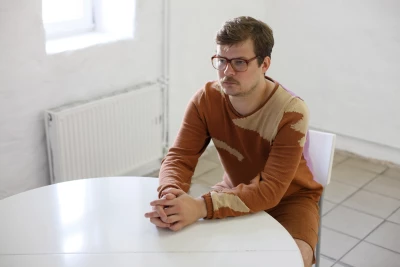
Kaspars Grosevs, Untitled, 2014

Inga Meldere, Magic Mountain, 2013, 100 x 100 cm, oil on canvas, photo Jan van Eyck Academy

Ieva Kraule, Nobody Dances Like That Anymore, still da video, 2014

Le fragole del Baltico, veduta mostra, opening 2015

Le fragole del Baltico, veduta mostra, opening 2015

Le fragole del Baltico, veduta mostra, opening 2015

Le fragole del Baltico, veduta mostra, opening 2015

Le fragole del Baltico, veduta mostra, opening 2015

Le fragole del Baltico, veduta mostra, opening 2015

Le fragole del Baltico, veduta mostra, opening 2015

Le fragole del Baltico, veduta mostra, opening 2015

Le fragole del Baltico, veduta mostra, opening 2015

Le fragole del Baltico, veduta mostra, opening 2015

Le fragole del Baltico, veduta mostra, opening 2015

Da sinistra: Ieva Epnere, 1 September, archival pigment print, each element 50x34cm, 2012; Jānis Avotiņš, I, oil on canvas 38x42 cm, 2012

Ieva Rubeze, Rubeze pasting Ieva, 1997, fotografie di Jānis Deinats

Da sinistra: Kaspars Groševs, Untitled, 2014; Inga Meldere, Untitled, 2014

Inga Meldere, Untitled , 2014

Inga Meldere, da sinistra: August, 2010; Bunch, 2010; Development, 2010; Self Portrait With Mirror, 2010; Artist, 2013; Please Don't Speculate With Feelings (Hommage to Richard Tutttle), 2010; Enough is Enough, 2011

DA sinistra: Signs II, Ashes, 2014; Krišs Salmanis, Landscape. The right brush strokes in the wrong place, 2014

Krišs Salmanis, Landscape. The right brush strokes in the wrong place, acrylic, particolare 7x2.5x2cm, 2014

Da sinistra: Ēriks Apaļais, I, 2014; S, 2014; Daria Melnikova, The Bowl, 2011,The Box, 2011; Graph Paper, 2011
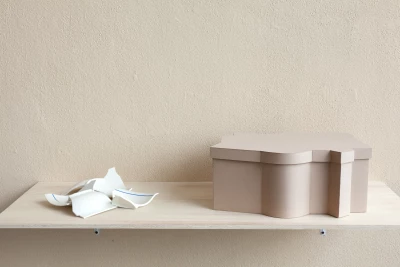
Da sinistra: Daria Melnikova, The Bowl, 2011; The Box, 2011

Oļa Vasilļjeva, Course in Mischief, 2015

Ieva Kraule, O blanket enchanted, particolare, 2015

Kaspars Groševs, Untitled, 2015

Da sinistra: Ieva Rubeze, Medicine, 2001; Krišs Salmanis, video compilation

Da sinistra: Ieva Kraule, ...if all you told was turned to gold, 2014; Inga Meldere; Oļa Vasiļjeva
Cigarette Man, 2014

Le fragole del Baltico, veduta mostra, 2015

Le fragole del Baltico, veduta mostra, 2015

Le fragole del Baltico, veduta mostra, 2015

Le fragole del Baltico, veduta mostra, 2015

Le fragole del Baltico, veduta mostra, 2015

Le fragole del Baltico, veduta mostra, 2015

Le fragole del Baltico, veduta mostra, 2015

Jānis Avotiņš, S, 2014 - 2015
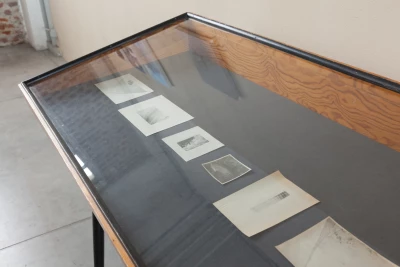
Jānis Avotiņš, S, 2014 - 2015

Oļa Vasiļjeva, Bourbonese Walk, 2015

Ieva Rubeze, Rubeze pasting Ieva, 1997, photography: Jānis Deinats

Jānis Avotiņš, I, 2012

Oļa Vasilļjeva, Course in Mischief, 2015

Ieva Kraule, O blanket enchanted, 2015

Oļa Vasiļjeva, Cigarette Man, 2014

Le fragole del Baltico, veduta mostra, 2015

Da sinistra: Ieva Rubeze, Medicine, video, 2001 ; video compilation by Krišs Salmanis
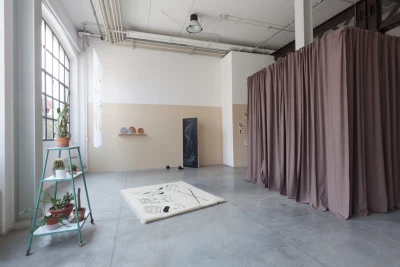
Le fragole del Baltico, veduta mostra, 2015

Le fragole del Baltico, veduta mostra, 2015

Le fragole del Baltico, veduta mostra, 2015
